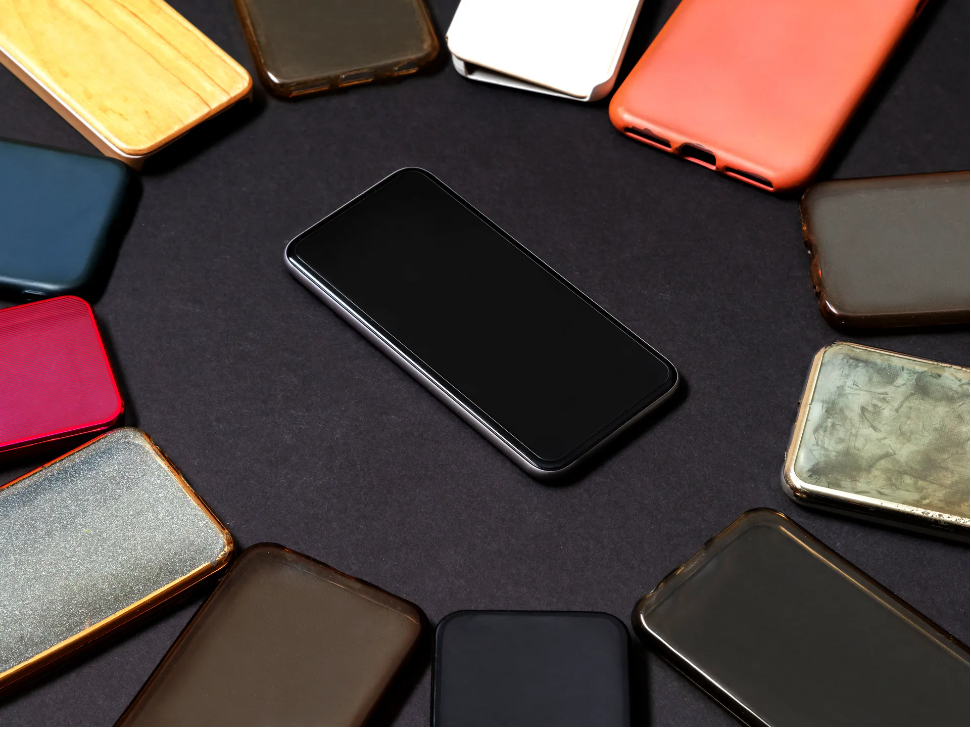
How to Pick the Perfect Phone Case
Share
The most common problem Agrawal says brings customers to repair shops is shattered glass screens. Screens are particularly vulnerable to shattering if the point of impact is at a corner of the phone, where the force exerted on the glass is more concentrated.
For a baseline level of protection, choose a case made of a shock-absorbent material (like silicone or rubber) that covers your phone’s vulnerable corners. Shoman advises smartphone owners against plastic cases, which do not effectively absorb shock and are likelier to translate any impact to the device itself.
Beyond that, what you buy depends on how and where you use your phone. A slim case may be fine if you’re confident you’ll only subject your phone to everyday bumps and minor drops. Try a translucent slim case like Totallee or Peel’s cases for iPhones, Google Pixel handsets, and Samsung Galaxy devices to show off your phone’s design.
Cases with thick, bulky shells add more weight and absorb greater shock. Agrawal recommends these cases for younger phone users.
“Teenagers are very much prone to breaking their phones,” she says, noting stories of younger customers dropping or stepping on their phones. For teens (or let’s face it, grown adults) who prefer heavy-duty protection, Agrawal recommends OtterBox brand cases. OtterBox offers cases for iPhone and a wide variety of Android phones. The hallmark of the OtterBox brand is the Defender series cases, which undergo rigorous tests for durability. The Defender Series Case for the iPhone 13, for example, offers a durable polycarbonate shell, flaps that shield charging ports, and a holster. (Yes, a holster.) It gives your phone the hardy air of a miniature Transformer.
Phone accessory retailers often carry screen protectors, which adhere directly to the phone’s touchscreen surface. Our experts recommend investing in tempered glass screen protectors, which deflect scratches more effectively than plastic screen protectors.
Shoman recommends that his clients look for screen protectors with a 9H hardness rating. “It’s the perfect thickness, and you still get that high-definition clarity in the screen,” he says.
But Agrawal and Shoman warn that a screen protector’s level of defense again damaging impacts is limited. While adhesive screen protectors effectively shield phones from direct force on the touchscreen, they don’t hold up as well when the phone is impacted from the sides or corners. A tempered glass screen protector should be used in conjunction with a case.
You will want to pick a color and design that suits your style, but there are a few other things worth thinking about. Consider how the case will feel in hand. Many cases have ridged sides or special finishes to enhance grip. After all, the best drop protection is not dropping your phone in the first place. Do you want a kickstand to prop the phone up in landscape mode while you watch movies? How about MagSafe compatibility if you have a recent iPhone?
Beware stiff button covers or ill-fitting cutouts. Openings for ports and camera lenses should be generous enough to not cause issues while using your phone. Thicker, rugged cases can sometimes interfere with wireless charging. If you can't try a case out before buying, read some online reviews or ask the manufacturer.
Pia Ceres
Simon Hill
